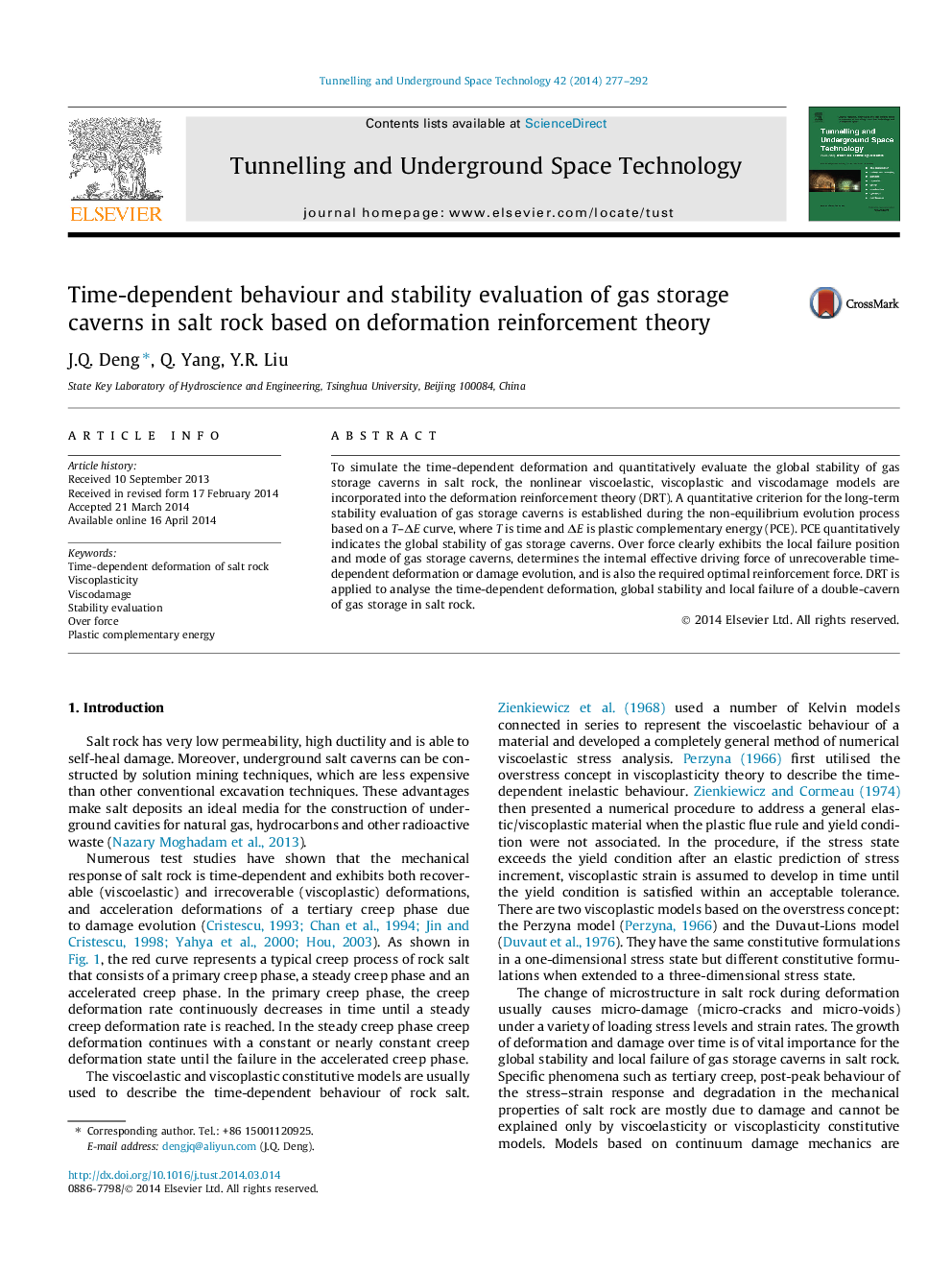| Article ID | Journal | Published Year | Pages | File Type |
|---|---|---|---|---|
| 312336 | Tunnelling and Underground Space Technology | 2014 | 16 Pages |
•The long-term stability of gas storage cavern in salt rock is analysed by deformation reinforcement theory.•Deformation reinforcement theory proposes a more effective criterion of long-term stability.•Plastic complementary energy is the quantitative indicator of instability.•Over force is the driving force of non-equilibrium evolution.•Non-equilibrium evolution follows the principle of minimum plastic complementary energy.
To simulate the time-dependent deformation and quantitatively evaluate the global stability of gas storage caverns in salt rock, the nonlinear viscoelastic, viscoplastic and viscodamage models are incorporated into the deformation reinforcement theory (DRT). A quantitative criterion for the long-term stability evaluation of gas storage caverns is established during the non-equilibrium evolution process based on a T–ΔE curve, where T is time and ΔE is plastic complementary energy (PCE). PCE quantitatively indicates the global stability of gas storage caverns. Over force clearly exhibits the local failure position and mode of gas storage caverns, determines the internal effective driving force of unrecoverable time-dependent deformation or damage evolution, and is also the required optimal reinforcement force. DRT is applied to analyse the time-dependent deformation, global stability and local failure of a double-cavern of gas storage in salt rock.
